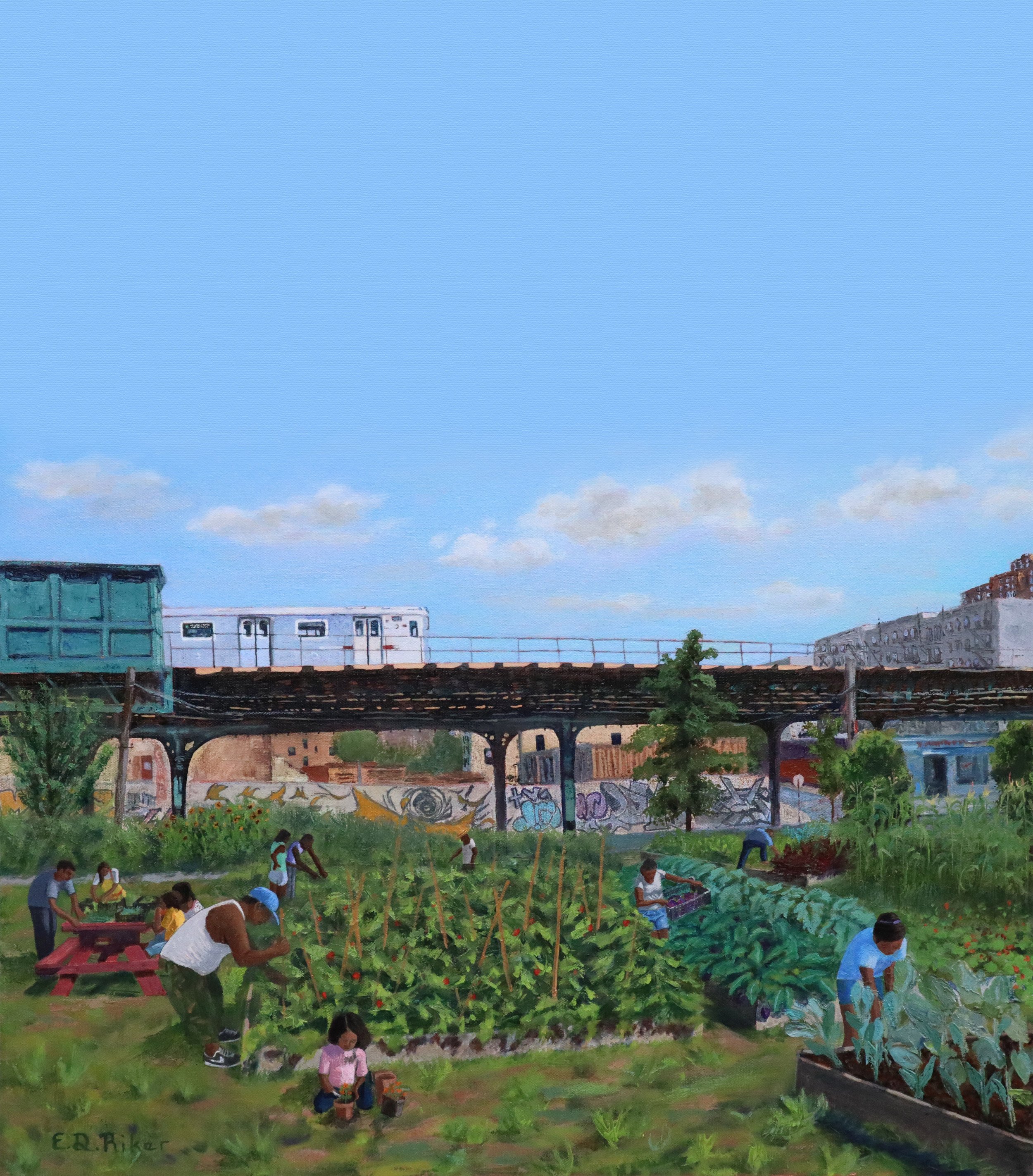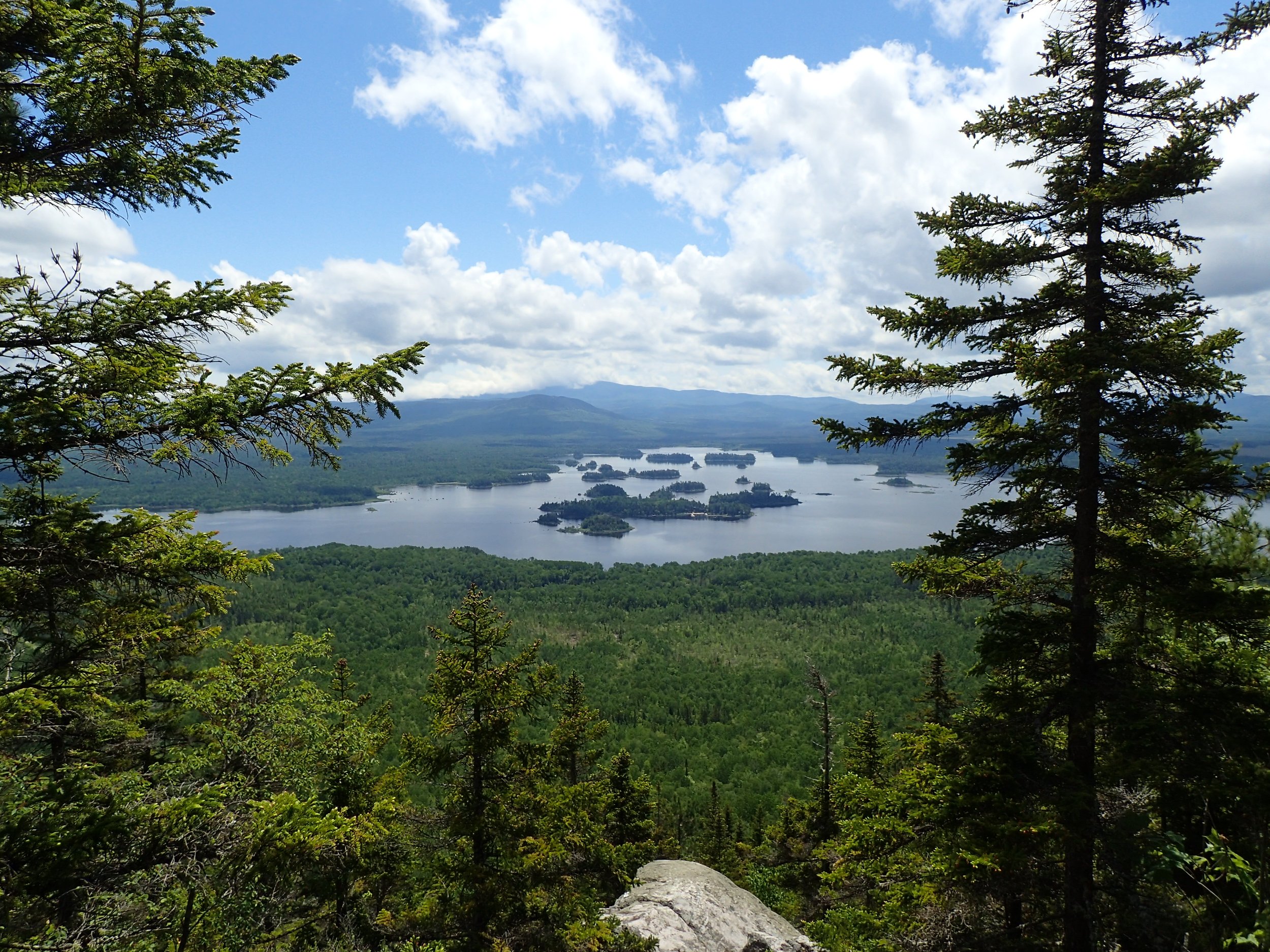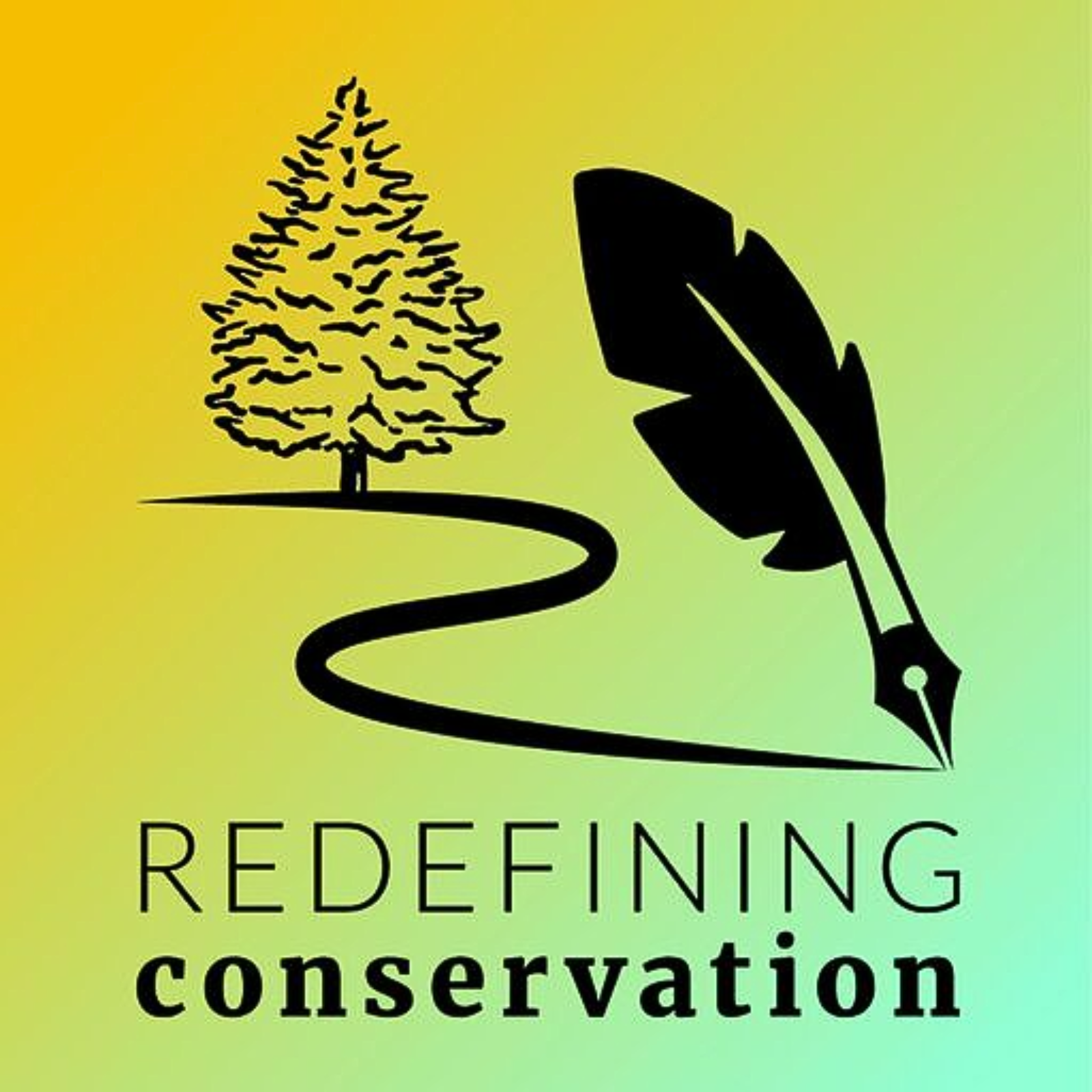
ISSUE #2 • WINTER 2024
From the
Ground Up
Conversations about conservation, climate, and communities in New England.
Artwork by Elizabeth Downer Riker - “Eagle Slope Community Garden, Bronx” - View Full ImageNOTE FROM OUR EDITORS
The climate crisis has exposed a need for a dramatically different, more integrated approach to conservation. While people have lived in reciprocity with land and water for millennia, unchecked development and destructive practices of the past century have threatened the natural systems and society itself here in New England and around the world. Each season, we share stories, conversations, research and perspectives that explore the inextricable connections between conservation, climate, and communities — human and wild.
Our hope is to inspire action and support for policies and practices that protect New England’s Wildlands, Woodlands, Farmlands & Communities.
FEATURE • ISSUE 2
A View from the North: Conservation and the Indigenous Reality
by Hans M. Carlson
BACKGROUND ARTWORK: "splitting WOOD" by Heidi BronerA love of wood shapes my story. The sounds and smells of split billets or of burning logs – the fresh weight of a plank just off the mill – the revelation of beautiful grain in a newly surfaced board – all are important in the telling. So, too, are the hints spoken quietly by the wood itself about what shape it would like to take. Often in woodworking one imposes a need, but to listen is a kind of gratitude, a thankfulness for what the tree has given to the work at hand, and recognition for all the wooded places that supply our constant human need.
A love of forests shapes my story, too, because home means trees at my back. It’s not that the grassy sightlines of western prairies, or the towers and arches of desert canyons aren’t compelling. They are. It’s just that the woods are where I have always lived. When they are not there, I miss their green overhead defining limits to the blue.
FEATURE • ISSUE 2
Farming in New England
by Anna Gilbert-Muhammad, Jamie Pottern, Caro Roszell, and Brian Donahue
BACKGROUND ARTWORK: "THE WEEDS" by Heidi BronerWhat place does food and farming have in an integrated vision for the future of conservation and community in New England? In this issue, From the Ground Up inaugurates a series of features addressing that question.
Today, farmland is a vanishingly small part of New England — about two million acres, or five percent. That farmland, along with the region’s fisheries, produces some 10–20 percent of our food, depending upon what one chooses to measure: weight, calories, dollars, USDA daily servings, or acreage footprint. Food, including its distribution, retailing, and preparation, remains an important part of the New England economy, because people still like to eat. Food production, however, is only a small slice.
Yet A New England Food Vision, which is part of the foundation of From the Ground Up, calls for increasing regional food production, and in turn, self-reliance, to at least 50 percent by 2060.
Conversations
Salmon are Creatures of the Forest
Land Justice and Land Protection on the Penobscot River
by Alex Redfield
The Penobscot River watershed has many histories, some beautiful and some ugly. The river’s first history is as a home to countless species of plants and animals since the last remnants of the glaciers carved its banks 15,000 years ago, with an estimated peak of nearly 100,000 Atlantic salmon and tens of millions of river herring, shad, and alewives returning annually to the waters of the Penobscot to feed and spawn. The vibrant ecosystem and fertile habitat led to its deep and integrated history as home to the Penobscot Nation. The original human inhabitants of the river’s banks built a thriving civilization utilizing all the river had to offer for at least 8,000 years. The Penobscot people traveled the entire length of the river’s 150 miles of headwaters and streams — from the rocky Atlantic coast to what is now the Quebec border — organizing their society around the diverse and abundant resources found within the river’s reach. Only within the last 300 years has the history of the river turned to one of contamination, extinction, and colonization.
On Sustenance
Land and home as nourishment
by Chelsea Steinauer-Scudder
My introduction to a conservation ethic was not through Thoreau or Leopold or Muir, but through the quiet, day-to-day choices and actions of a particular person: my father; and a particular bit of land that my family called home for two decades: Lost Farm. My dad — a lanky plant ecologist who is forever bearded and always seen wearing worn-out clothes and a tattered baseball cap, even on the most special of occasions (i.e., my wedding) — moved with my brother and me from our home in Norman, Oklahoma, to Nantucket Island, 25 miles off the coast of Massachusetts, when I was 11 years old. Here he worked for the Massachusetts Audubon Society and lived on Lost Farm, a 70-acre parcel of conserved Audubon land in the center of the island, featuring windswept meadows, stout pitch pine forests, and ample frontage along Hummock Pond. As Nantucket’s sole Audubon employee, he set about managing and learning the land. He conducted plant surveys, kept a daily log of the weather and rainfall, and set up plots and experiments.
Policy Desk
New England Policy Chronicle
by Alex Redfield
A key goal of this publication, along with sharing information and stories about the relationships between society and nature, is to inspire readers to engage with local advocates and policymakers in support of a future that reflects the values of equity and diversity in our society, in our landscape, and in the ecosystems where we live. We hope the Policy Desk section of From the Ground Up becomes a useful repository of inspiring actions and opportunities for readers across New England.
Climate-Oriented Forest Management: New Guidelines for Massachusetts
by David Foster, Stephanie Cooper, and Kurt Gaertner. With reflections from Richard Birdsey, Alexandra Kosiba, Laura Marx, Todd Ontl, Christopher Riely, and Jennifer Shakun
Introduction by David Foster
Massachusetts supports the most carbon-dense forests in New England. Recognizing the important role of these forests and other natural solutions to climate change, Governor Maura Healey has committed to the permanent conservation of 40 percent of the state in forests to help achieve the goal of reaching net zero greenhouse gas emissions in Massachusetts by 2050. To ensure that all forests in the state are managed in ways that support this climate goal, the Secretary of the Environment tasked a 12-person committee of individuals from Massachusetts, Vermont, New Hampshire, and Rhode Island to develop a set of forest management guidelines. These guidelines and many other recommendations appear in the Report of the Massachusetts Climate Forestry Committee, which was released in early January 2024.
Conservation in Action
The Benefits of Forest Conservation Easements
by Mark Berry, Robert Perschel, Steve Tatko, and Karin Tilberg
A recent study of Maine’s working forest conservation easements and a review of that research claim that these easements have not provided substantial ecological benefits, specifically that they had little effect on rates of forest loss or harvesting, compared to nearby forestlands.
As practitioners working actively to conserve Maine’s forests, we offer a broader perspective on the benefits of working forest conservation easements.
Further Considerations: The Benefits of Forest Conservation Easements
by David Foster
I am grateful to my colleagues Mark Berry, Bob Perschel, Steve Tatko, and Karin Tilberg for contributing to the conversations in From the Ground Up, and for their leadership in advancing land protection and conservation management across northern New England. I fully agree with them concerning the importance of Maine forests and the critical role of conservation easements in securing the benefits of our forests for nature and society. My personal commitment to conservation easements includes working over 20 years to place a conservation easement on the 650 forested acres in northern Vermont owned and managed by my family since the 1960s.
Reunited
Learnings from the 2023 RCP Network Gathering
by Bill Labich
The 2023 Regional Conservation Partnership (RCP) Network Gathering brought together a diverse group of people, from scientists and conservationists to policy makers, community leaders, and students. We shared, discussed, and learned about topics that impact — and are impacted by — land conservation, land use, communities, and our varied relationships with Nature. The editors of From the Ground Up attended as presenters, panelists, and participants, and we all agree that this event is an in-person embodiment of the integrated, collaborative approach that is central to our work and to the Wildlands, Woodlands, Farmlands & Communities vision.
This recap of the event originally appeared on the Highstead website and was republished with permission of the author, Bill Labich, Director of Conservation at Highstead.
Read, Watch, Listen
The Bookshelf
Essential reading from our editors and contributors.
ARTWORK BY JACO TAYLORBulletin Board
Events, updates, and announcements from our partners and friends from around the region.
Want to join the conversation?
We invite your questions, reactions, debates, suggestions, and contributions. Our editorial team is committed to expanding the chorus of voices needed to safeguard the health, resiliency, and vibrancy of New England’s communities—both human and wild.
Reflections
Artistic expressions that reflect Nature's complexity, simplicity, and beauty.
Golden Delicate
A POEM BY BILL DRISLANE
The tap I hammered
into this hole drilled in the sapwood
offers the first
tap
on the bottom of the pail,
a second tap, and all that follow,
dripping sap sounding the pail’s
hollow, a tapping that starts a season,
that stops me, hammer in hand
in the settling shadows, standing in the snow,
in the tapping, sap in the steel
spout, drops from the fluted tip
tapping the metal pail, tap
after tap, as if keys striking the bare
platen of the bucket, letter by letter
at eternity’s pace, news of the sap’s weather
and our brief harvest of sweet ascent.
































